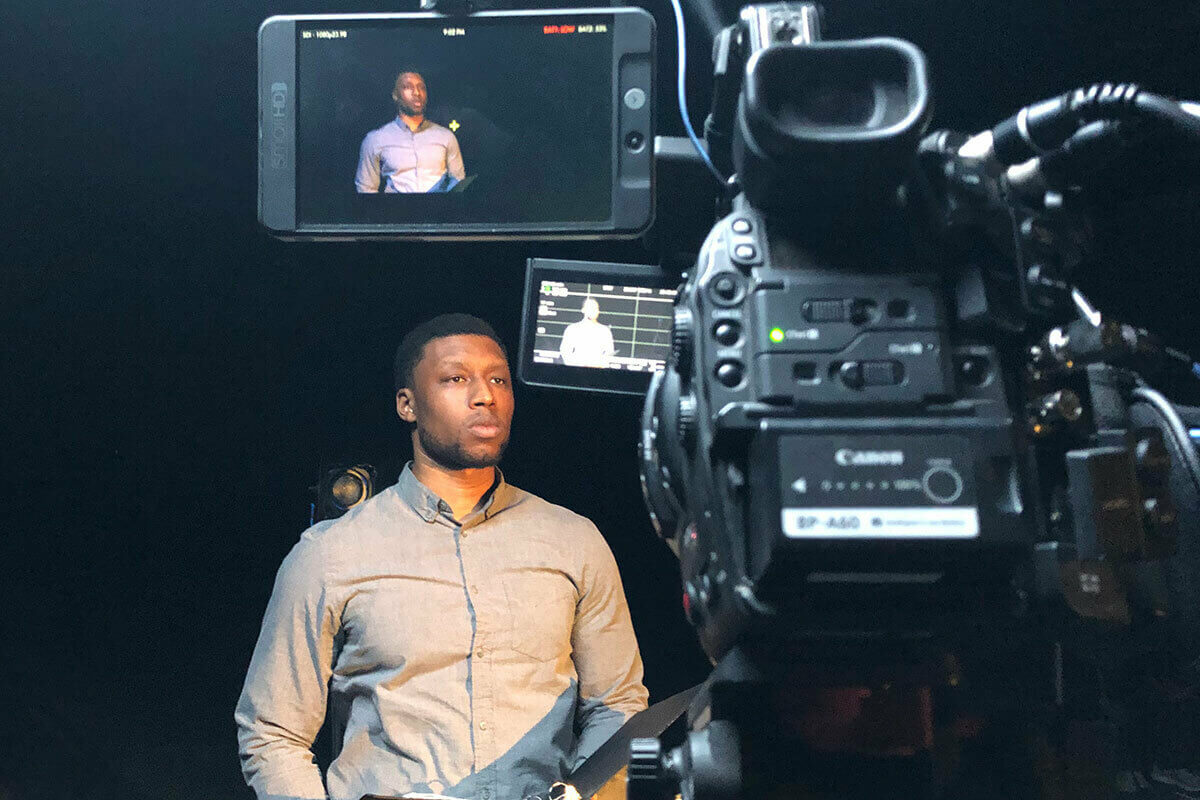
Amidst all the anxiety and upheaval created by the coronavirus pandemic, Opera Notre Dame faced a difficult and unique dilemma.
How do you give a voice to voice students when their foremost skill — singing opera — poses a potential health risk to others?
“To the extent it was possible, we needed to do everything we could do to give our students the opportunity to perform,” said Kiera Duffy, head of undergraduate voice studies in the Department of Music.
As uncertainty reigned in the fall of 2020, Duffy started to plan with a clear goal in mind — an opera production that is artistically meaningful, an experience that is educationally rich, and rehearsals and performances that are safe as possible.
That goal was achieved because creative minds did what they do best — they got creative.
They made a movie.
Presented by Opera Notre Dame, Please Look: A Cinematic Opera Experience premieres at the DeBartolo Performing Arts Center’s Browning Cinema at 6:30 p.m. Friday, Oct. 29, and 3 p.m. Sunday, Oct. 3. The screenings are free but ticketed, and a panel discussion will be held after the Oct. 29 show.
The 75-minute film features about 20 students, most of whom are from the Department of Music and Sacred Music at Notre Dame program, performing excerpts from the work of minimalist composers such as John Adams (Nixon in China), Julius Eastman (The Holy Presence of Joan d’Arc), Philip Glass (Akhnaten), David Lang (The Little Match Girl Passion), and Meredith Monk (Atlas).
“To see them come into film shoots in a warehouse and act like they were seasoned veterans of the medium, it was deeply moving and incredibly inspiring.”
‘There were a number of times I cried watching them’
To complete the project, tradition took a back seat to reality. Comfort zones expanded.
Opera singers typically perform with an orchestra for an audience in a theater with acoustics that carry their voice. In this production, the vocals and music were pre-recorded, and the singers lip-synced their performances to the camera.
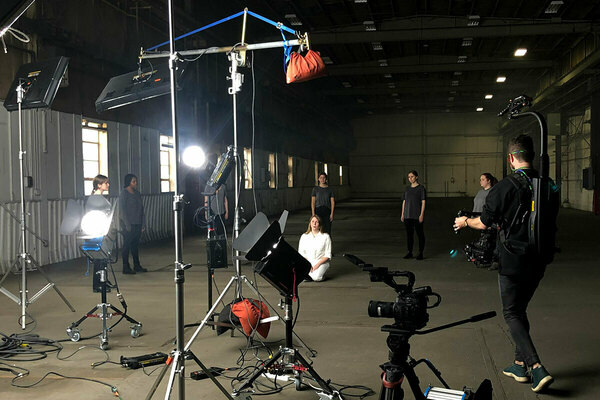
That’s a skill that even Duffy — who has traveled the world for more than a decade as a soprano working with major opera productions — doesn’t have a lot of experience doing.
“To see them come into film shoots in a warehouse and act like they were seasoned veterans of the medium, it was deeply moving and incredibly inspiring. There were a number of times I cried watching them,” she said. “Most people going to music school are not learning how to lip-sync to recordings of themselves while acting for the camera. I was just so impressed with the students’ openness and willingness to dive into this project, especially with all of the uncertainty surrounding it.”
Fortunately, no COVID-19 cases emerged during the three months of rehearsals and four days of filming. The foundation for that success came from the guidance of Mark McCready, a professor and the senior associate dean for research and graduate studies in the College of Engineering, who served as the project’s COVID-19 safety consultant.
McCready ran tests with fog machines to simulate human aerosol emission and tracked both the fog’s path and the time it took to dissipate. With that information, students had an educated sense of where they could sing and where others could play wind and brass instruments — and for how long. As long as they followed McCready’s advice, they could rest easier knowing that their risk of contracting COVID, while not nothing, was greatly mitigated.
The rehearsals also served as a meditative space for the students as they watched a world spin through the pandemic, an American presidential election, and deep discussions of racial inequality. The film doesn’t offer explicit commentary on any of it, but the work helped the students process all of it.
“This is not meant to be a political or didactic work. It is conceptual in nature, and the beauty of art in abstraction is that the experience that the viewer — and the performer — takes away is very personal,” Duffy said. “My hope was that this film might provide a space to reflect on the many and profound challenges we all have faced in the last two years.”
‘It was so enriching’
As for the shift from live to recorded performances, Duffy acknowledged that nothing can replace the experience of hearing a powerful operatic voice in an acoustic setting.
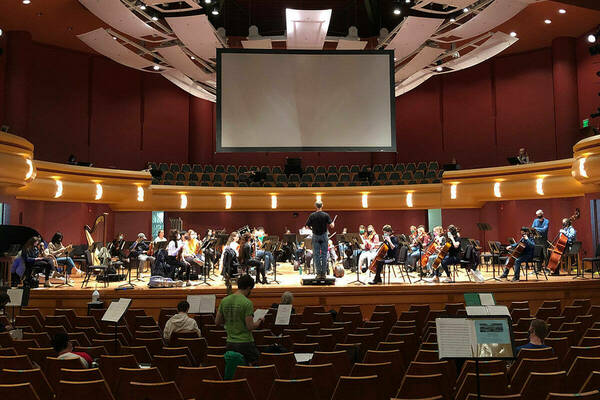
“We in the classical music world, however, would be foolish not to acknowledge the role that screens play in modern life,” she said. “So I think there is a place for integrating film and TV into our corner of the arts world, while not abandoning the live performances that distinguish our form.”
The students also welcomed the experience, which fostered personal and artistic growth as they ventured into pre-recording and filming.
“It was so enriching. I felt like I had a little eye into modern artists of today who record their songs and shoot music videos,” said Megan Meyer, a senior in the Program of Liberal Studies who is also majoring in music with a concentration in vocal performance.
“It’s having an appreciation for that kind of art form and the kind of emotional investment that goes into those performances — even though it can be repeated” through multiple film takes, said Meyer, who performs in the film as a soloist and in ensemble and backup vocal roles.
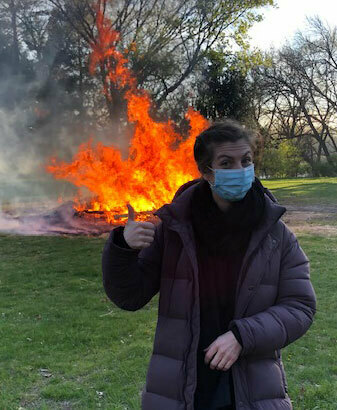
Students had the opportunity to prepare their music with several distinguished classical music industry professionals — including Monk, a MacArthur Foundation “Genius Grant”-winning composer/choreographer, composers Lang and Michael Gordon, and performers Katie Geissinger, Anthony Roth Costanzo, and Davóne Tines. Cori Ellison, a faculty member at The Juilliard School and staff dramaturg at the Glyndebourne Festival Opera, and renowned opera and film director James Darrah served as consultants on the film.
Raj Das is a second-year master of sacred music student with a concentration in voice. He plays two characters in the film and appreciated the opportunity to participate in virtual master classes with Lang and Monk. The coaching sessions with Monk made for an experience he called “beyond privileged.”
“Hearing her own vision, her own takes — how she saw a vision of her performances — was really remarkable,” Das said.
Even though the performance lacked a live audience, Das said the filming didn’t feel like he was singing in a vacuum.
“When you’re on stage, whatever happens in the moment is what the audience gets. There are no do-overs, no retake. But I think we don’t feel the ‘eyes’ as acutely as when there’s a guy with a body camera 5 feet behind you and he’s focused on you,” Das said. “It’s a different feeling even though you do get the opportunity to redo, you do get the opportunity to refine.”
‘A legacy that very much continues’
Directed by Evan Monroe Chapman and Kevin Eikenberg of the Philadelphia-based production company Four/Ten Media, the film also benefited from collaborations with other Notre Dame departments, the community, and a little luck.
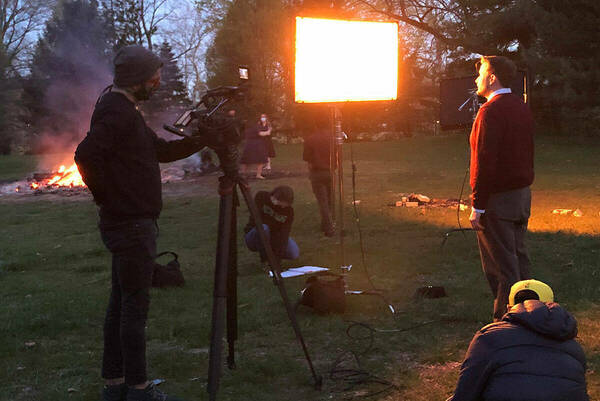
DPAC provided rehearsal space at Leighton Concert Hall. Costumes came from the Department of Film, Television, and Theatre. The warehouse that was needed for certain scenes was provided for free by Holladay Properties. When the set’s outdoor light batteries failed, Duffy sent a text message that sparked the donation of a generator 20 minutes later. When the crew needed a controlled bonfire for a scene, the Notre Dame Fire Department lit an inferno that amazed the crew. A connection through the Studebaker National Museum loaned a 1967 Studebaker Avanti for a scene. A posting on a neighborhood forum yielded a 1950s-era television for another scene.
With everything ready for the film’s release, the attention now turns to the audience and the hope that viewers will gain a more expansive understanding of opera.
“A lot of people have this idea that opera is people in 18th-century petticoats singing in a foreign language, about stories that feel very disconnected to contemporary American life,” Duffy said. “But with this project, we wanted to challenge that narrative. We wanted people to know that there has been really compelling ‘classical’ vocal music being written by a diverse roster of American composers over the last few decades, a legacy that very much continues into the present day.
“If people walk away with a better understanding of that, I’ll consider Please Look a resounding success.”
“A lot of people have this idea that opera is people in 18th-century petticoats singing in a foreign language, about stories that feel very disconnected to contemporary American life. But with this project, we wanted to challenge that narrative.”
Originally published by at al.nd.edu on October 25, 2021.